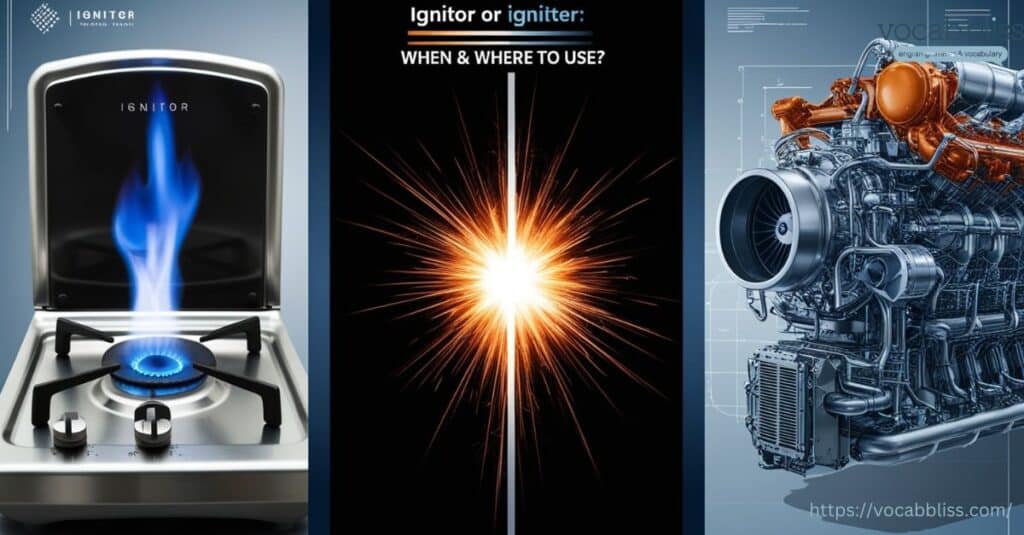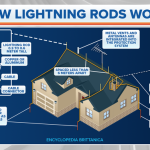Choosing between ignitor or igniter can feel confusing, especially when the two terms appear interchangeably in technical, industrial, and everyday contexts. This article will guide you through the nuances of their meanings, usage, and regional preferences. By the end, you’ll know precisely when and how to use each spelling.
Quick Summary
In the debate between ignitor or igniter, both terms refer to devices or mechanisms used to start combustion or ignite a fire. Igniter is the more commonly used term, especially in everyday contexts such as appliances and automotive settings, while ignitor tends to appear in more technical or formal contexts like aerospace or engineering. The primary difference lies in regional preferences, industry-specific usage, and formality. For most general purposes, igniter is the safer choice, but in specialized fields, ignitor might be preferred for its more formal tone. Ultimately, understanding the context will guide you in making the right choice between these two terms.
Why Is There Confusion Between ignitor or igniter?
The confusion between ignitor or igniter arises from a combination of historical, regional, and linguistic factors. Understanding the origins of this discrepancy can shed light on why both spellings exist and how they are used today.
Historical Roots of the Words
Both ignitor or igniter derive from the Latin word ignis, meaning “fire.” The term entered the English language during the early development of combustion technology and fire-related tools. Over time, the spelling evolved, with -er and -or suffixes reflecting different linguistic trends.
In English, the -er suffix became more widely adopted for words denoting agents or devices (e.g., “starter,” “lighter”). However, the -or suffix persisted in certain technical and scientific contexts, possibly influenced by Latin-derived vocabulary in those fields.
Variations in Spelling Conventions Across Regions
Regional differences in English significantly contribute to the confusion:
- American English: Simpler spellings are a hallmark of American English, driven by Noah Webster’s efforts to streamline language in the 19th century. For example, “color” replaced “colour,” and “center” replaced “centre.” Similarly, igniter became the more commonly accepted spelling in the U.S.
- British English: While British English often retains more traditional spellings, ignitor has not gained significant traction there. Instead, British English aligns closely with igniter in everyday and technical usage.
- Other English Variants: Countries like Canada and Australia follow British English conventions but may use both spellings depending on industry or educational influences.
Influence of Language Standardization
The role of language standardization, especially through influential dictionaries, cannot be overstated:
- Webster’s Dictionary in the U.S. played a pivotal role in promoting simplified spellings like igniter. Webster’s efforts aimed to make American English distinct and more accessible by eliminating unnecessary complexities.
- Oxford English Dictionary (OED) in the UK retained more traditional spellings but largely ignored ignitor, favoring igniter in both formal and informal contexts.
Key Insight
The divergence between igniter or ignitor spelling reflects a blend of historical evolution, regional preferences, and attempts to standardize the English language. While the two spellings coexist, igniter has become the dominant form in most contexts.
What Do ignitor or igniter Mean?
Both ignitor vs igniter refer to devices or components that ignite fuel or initiate combustion. While their definitions overlap, there are subtle nuances in usage and preference depending on the context.
Detailed Definitions
- Igniter:
An igniter is a device or mechanism that creates a spark or heat to start combustion. It is commonly associated with a variety of applications, from household appliances to industrial machinery. Examples include:- Gas stove igniters that produce a spark to light burners.
- Automotive igniters, such as spark plugs, that ignite the air-fuel mixture in engines.
- Furnace igniters, which start the combustion process in heating systems.
- Ignitor:
The term ignitor serves the same functional purpose but is less frequently used. It is occasionally preferred in highly technical or industry-specific contexts, particularly in fields like aerospace and pyrotechnics. Examples include:- Ignitors used in rocket propulsion systems to initiate fuel combustion.
- Pyrotechnic ignitors designed for fireworks or explosives.
Contextual Differences in Usage
- Everyday Language:
In common speech and consumer product descriptions, igniter is the dominant spelling. For example, “Replace the igniter in your gas stove” is the typical phrasing in user manuals or guides. - Technical or Industrial Contexts:
Some technical fields, such as aerospace or heavy machinery, may use ignitor to align with traditional terminology in industry-specific documents. This is often a matter of convention rather than a strict rule. - Regional Influence:
As noted earlier, igniter spelling is more prevalent in American English, while ignitor sees sporadic use, often influenced by niche industries or legacy documentation.
The Debate: Should You Use ignitor or igniter?
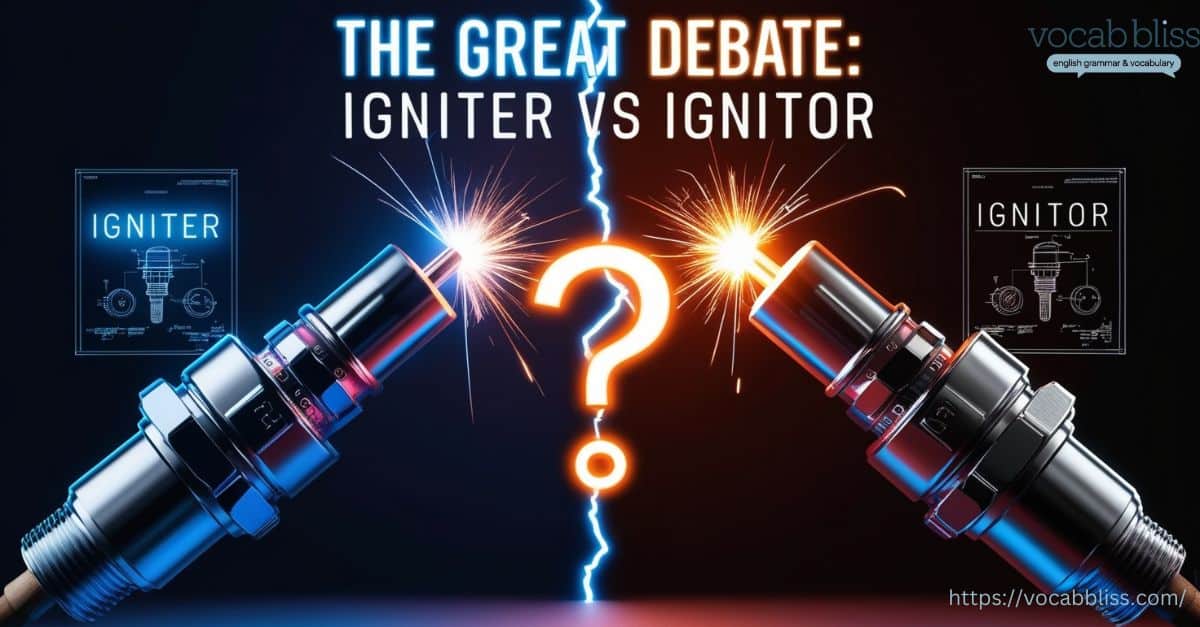
Deciding between igniter or ignitor can depend on regional spelling conventions, industry-specific practices, and the formality of the context. While both terms are technically correct, their preferred usage varies across settings.
Regional Preferences
American English Usage
In American English, igniter is the overwhelmingly favored spelling. This preference aligns with broader trends in simplifying English spellings, such as “center” instead of “centre” and “color” instead of “colour.”
You’ll most commonly find igniter in:
- Consumer appliance manuals: “How to replace your gas stove igniter.”
- Automotive guides: “Check the igniter in your ignition system.”
- Technical documents: Used across industries from HVAC systems to engineering texts.
British English Usage
In British English, igniter is also more common than ignitor, despite British English often retaining traditional spellings. While ignitor might appear in niche contexts, igniter spelling is generally preferred in everyday and technical usage.
Examples include:
- Gas and heating appliance instructions in the UK.
- Technical handbooks used in engineering and manufacturing industries.
Industry-Specific Usage
Certain industries may adopt ignitor spelling for historical or conventional reasons. Below are examples of how spelling preferences vary by sector:
- Engineering and Aerospace:
- Ignitor is occasionally used in technical specifications for rocket engines and other aerospace applications. For example, NASA documentation may include references to “ignitors” for propulsion systems.
- Automotive Industry:
- The term igniter is more prevalent, particularly in reference to spark plugs and ignition coils. Car repair manuals and manufacturer guides typically adhere to this spelling.
- Pyrotechnics and Explosives:
- Industries dealing with fireworks or incendiary devices often use ignitor, possibly due to longstanding conventions in explosive terminology.
- Industrial Equipment:
- In sectors such as heating, boilers, or gas turbines, igniter dominates as the standard spelling in user manuals and maintenance guides.
Formal vs Informal Contexts
- Formal Contexts:
In technical documents, research papers, and industry standards, the spelling may depend on organizational or regional style guides.- Example: A technical manual for a combustion engine might specify “ignitor” to maintain consistency with other terminology.
- Informal Contexts:
In everyday communication, igniter is the more intuitive choice. It’s the spelling most people recognize and associate with devices like gas stoves or car ignition systems.
Key Insight
For most situations, igniter is the safer and more universally accepted choice. Use ignitor only in highly specific technical or industry-standard documents where it is the preferred spelling. Tailor your choice to your audience and the context to ensure clarity and professionalism.
Synonyms and Related Terms for ignitor or igniter
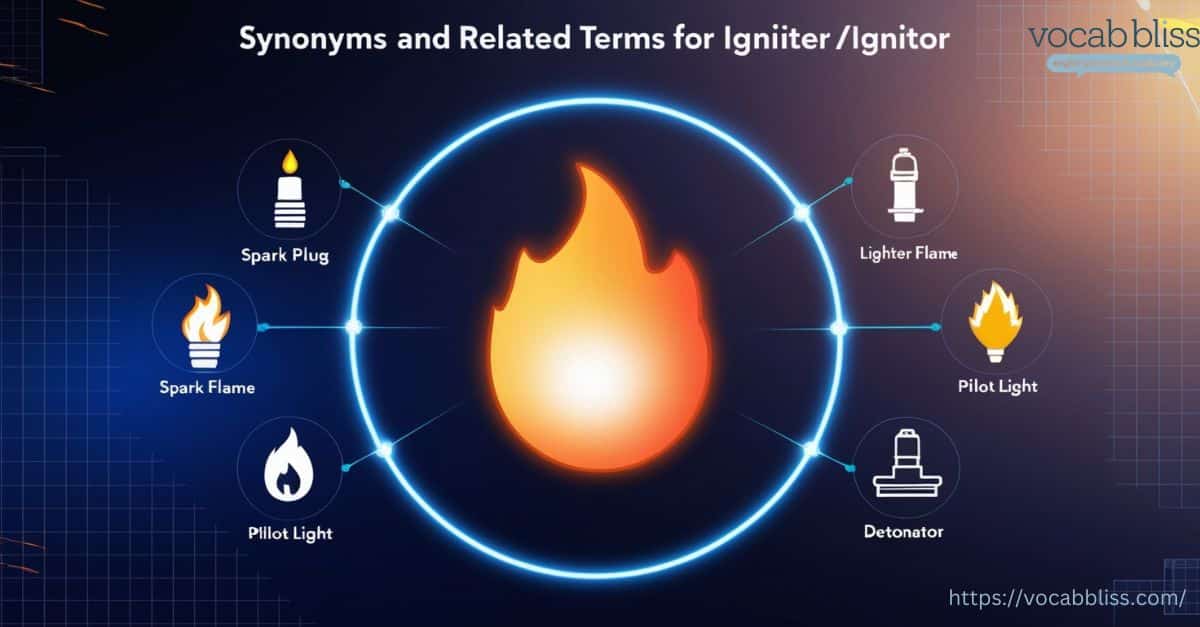
In various contexts, synonyms or related terms can substitute igniter or ignitor to enhance clarity or fit the specific application. These terms often highlight different functions or types of ignition devices.
Common Synonyms for Igniter vs Ignitor
| Synonym | Definition/Use | Example |
|---|---|---|
| Spark Plug | A device used in internal combustion engines to ignite the air-fuel mixture. | “Check the spark plug during routine servicing.” |
| Fire Starter | A tool or material for starting fires, typically in survival or camping scenarios. | “Use a fire starter to ignite the campfire quickly.” |
| Pilot Light | A small flame used to ignite gas burners in appliances like stoves or water heaters. | “The pilot light ensures the gas stove is ready for use.” |
| Combustor | A device where combustion occurs, common in turbines and jet engines. | “The combustor in the jet engine needs regular inspection.” |
| Ignition Coil | An automotive part that generates the high voltage needed for spark plugs. | “The ignition coil converts power for the spark plug.” |
| Detonator | A device for triggering explosives or pyrotechnic charges. | “Detonators are used in controlled demolitions.” |
| Lighter | A handheld device for igniting cigarettes, candles, or small fires. | “The lighter failed to ignite the candle.” |
Situations Where Synonyms Might Be Preferable
Using synonyms depends on context and the specific function being described. Below are scenarios where a synonym may be more appropriate:
- Automotive Contexts:
- When discussing car engines, “spark plug” or “ignition coil” is more precise than “igniter.”
- Household Appliances:
- For gas stoves, “pilot light” or “lighter” may resonate better with consumers unfamiliar with the technical term igniter.
- Camping and Outdoor Use:
- In survival guides, “fire starter” is commonly used to refer to tools like flint strikers or matches.
- Industrial Applications:
- “Combustor” is the preferred term when discussing turbines or large-scale engines in engineering contexts.
- Explosives and Pyrotechnics:
- “Detonator” is the standard term for triggering controlled explosions, making it more suitable than ignitor in this field.
Examples of ignitor vs igniter in Context
To better understand how ignitor or igniter are used, let’s look at examples from different contexts, including everyday language, technical writing, and product descriptions. These examples will highlight the appropriate usage of each term depending on the setting.
Sentences Demonstrating Proper Usage in Everyday Language
- Igniter:
- “When the gas stove wouldn’t light, I realized the igniter had worn out and needed replacing.”
- “Make sure the igniter is working before you attempt to light the grill.”
- “The furnace wouldn’t turn on until we fixed the igniter inside the system.”
- Ignitor:
- “The rocket’s ignitor was malfunctioning, delaying the launch.”
- “A faulty ignitor in the engine could cause a misfire.”
- “The pyrotechnics expert carefully checked each ignitor before the fireworks display.”
Examples from Literature
In literary works, ignitor or igniter may appear in metaphorical contexts, such as discussions of motivation or the initiation of action. While igniter tends to be used more often, here are examples:
- Igniter (Metaphorical use):
- “Her speech was the igniter that sparked a wave of social change.”
- “The protagonist’s curiosity was the igniter of the entire adventure.”
- Ignitor (Used in technical contexts in fiction):
- “The ignitor at the heart of the spaceship powered up, sending a jolt of energy through the crew’s control panel.”
- “In the dystopian world, the rebels used a modified ignitor to ignite their message in the form of an explosion.”
Examples from Technical Writing
- Igniter:
- “The igniter is responsible for initiating the combustion process in both gas and oil burners.”
- “Replace the igniter after 2,000 hours of use to prevent system failure.”
- Ignitor:
- “The ignitor in the rocket propulsion system must be checked for consistency to ensure reliable ignition.”
- “Due to its high heat tolerance, this ignitor is specifically designed for high-performance industrial furnaces.”
Examples from Product Descriptions
- Igniter:
- “This high-quality igniter ensures quick and efficient ignition for your gas stove, lasting longer than the standard models.”
- “The igniter system in this oven works instantly for a hassle-free cooking experience.”
- Ignitor:
- “This ignitor is essential for triggering the ignition sequence in gas-powered engines.”
- “Used in pyrotechnics, this ignitor guarantees a reliable spark, even in extreme conditions.”
The Origins and Etymology of ignitor or igniter
The words ignitor or igniter share a common linguistic origin, deeply rooted in Latin. Their evolution into modern English reflects the expansion of scientific, technical, and industrial vocabulary over the centuries. Understanding their etymology offers insight into why these terms emerged and how they became part of everyday language.
Latin Roots: Ignis (Fire)
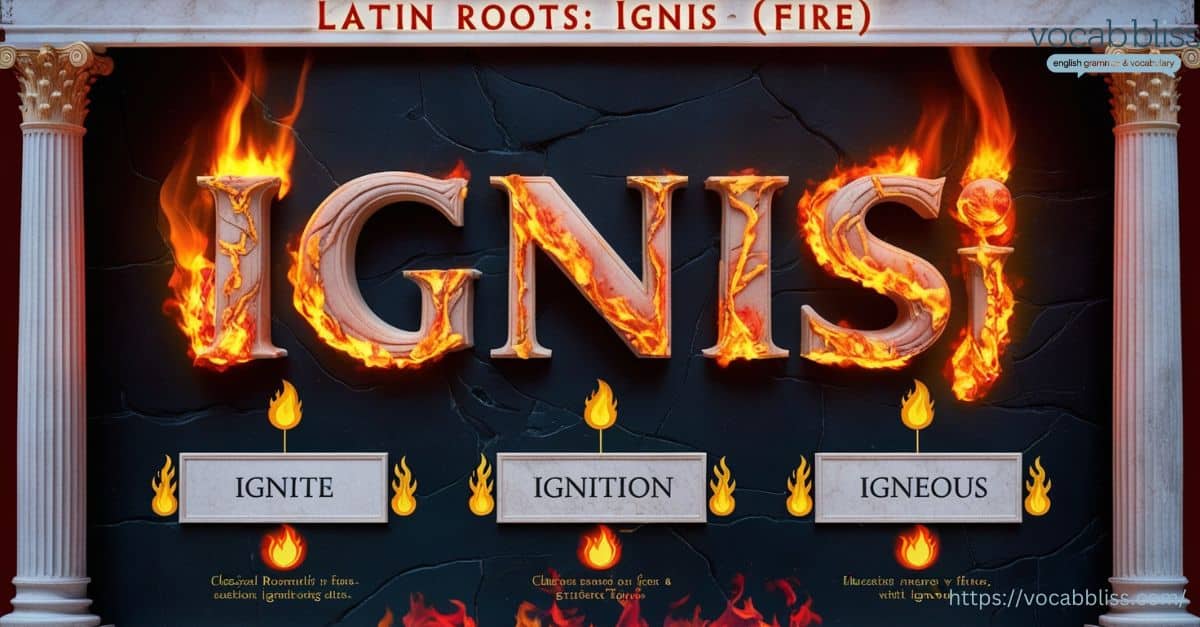
The primary root of both ignitor or igniter comes from the Latin word ignis, meaning “fire.” In Latin, ignis was used not just to describe flames but also anything related to combustion or heat. Over time, as language evolved, this root gave rise to various words linked to igniting, combustion, and fire starting.
Evolution of the Terms Over Time
- Ignis to Ignis-Related Terms:
As Latin morphed into the Romance languages (such as French, Spanish, and Italian), words related to ignis maintained their meaning, but the spellings began to differ slightly. In Old French, for example, the word igniter began to appear, influenced by the Latin ignis and the action of starting a fire. - Early English Usage:
English borrowed many words from Latin during the Norman Conquest, and terms like ignite (to set on fire) and ignition (the process of starting a fire) began to take shape. However, igniter and ignitor appeared as distinct terms only much later, as industrialization and technological advancements required more specialized vocabulary for devices designed to start fires or initiate combustion. - “Igniter” in the 19th Century:
The term igniter likely began to appear more regularly in the 19th century with the rise of steam engines, gas lighting, and other industrial technologies. It was used to describe devices that started combustion in engines and machinery, marking its transition from a general term for fire-starters to a more technical one. - “Ignitor” in Technical Use:
Meanwhile, ignitor likely emerged as a variant, especially in technical and scientific circles. Its usage was especially common in engineering and pyrotechnics, where the term needed to be precise and in line with existing terminology. The suffix “-or” is often associated with agents or tools that perform an action, lending a more formal, mechanical tone to the word.
Introduction and Adoption in English
- Early Adoption:
The terms igniter and ignitor were initially adopted into English in specialized contexts, particularly in industries like engineering and pyrotechnics. The igniter spelling was favored more broadly in consumer goods and appliances, such as gas stoves, where the need for a simpler, more user-friendly term prevailed. - Standardization of Spelling:
As English became more standardized, dictionaries like Samuel Johnson’s A Dictionary of the English Language (1755) and Noah Webster’s An American Dictionary of the English Language (1828) helped solidify the use of igniter in American English. The ignitor variant, while still technically correct, remained a less common choice in daily usage.
Practical Applications and Usage
When deciding between igniter or ignitor, keep these tips in mind:
- For technical writing: Default to igniter, unless specific guidelines suggest otherwise.
- For casual communication: Use igniter, as it’s more intuitive and widely recognized.
- Industry contexts: Check preferred terminology in relevant fields (e.g., aerospace, gas appliances).
Common Mistakes to Avoid
- Using ignitor spelling in non-technical or informal writing.
- Assuming one spelling is “more correct” without considering context.
Comparison Table: Igniter vs Ignitor
| Feature | Igniter | Ignitor |
|---|---|---|
| Regional Preference | Common in American English | Less common globally |
| Usage Context | General use | Technical or industry-specific |
| Formality | Formal and informal | Primarily formal |
Conclusion:
When deciding between igniter or ignitor, it’s clear that both terms serve the same essential purpose: referring to devices or mechanisms that initiate combustion or start a fire. However, the choice of which term to use depends on several factors, including regional preferences, industry-specific contexts, and the formality of the situation. Igniter is the more commonly used term, especially in everyday contexts, consumer products, and general technical writing. It is the preferred spelling in both American and British English, particularly in the appliance and automotive industries. Ignitor tends to be used in more specialized fields, such as aerospace, pyrotechnics, and engineering.
FAQs About Igniter or Ignitor
- What is an ignitor?
An ignitor is a device designed to ignite fuel or start combustion, often used in technical fields. - What is the use of an ignitor?
Its primary use is to initiate combustion, commonly found in engines, gas stoves, and industrial furnaces. - Are igniter and ignitor interchangeable?
While their meanings overlap, igniter spelling is more common and broadly accepted. - What is an igniter in a car?
An igniter meaning in automotive refers to components like spark plugs that ignite fuel-air mixtures in combustion engines. - What is a fuel igniter?
A fuel igniter initiates combustion in systems like jet engines or industrial burners. - How do you spell igniter? / how do you spell ignitor?
The correct spelling is igniter, though ignitor is acceptable in specific contexts.

